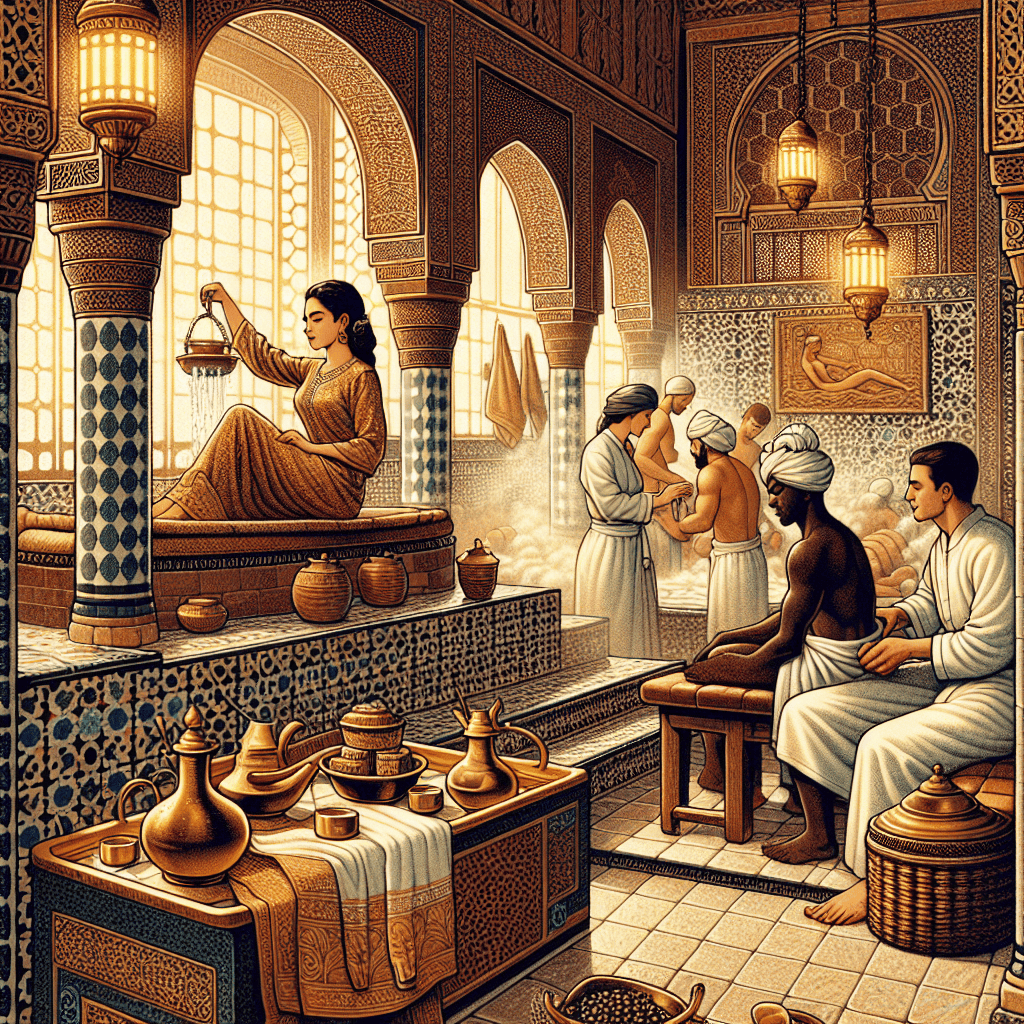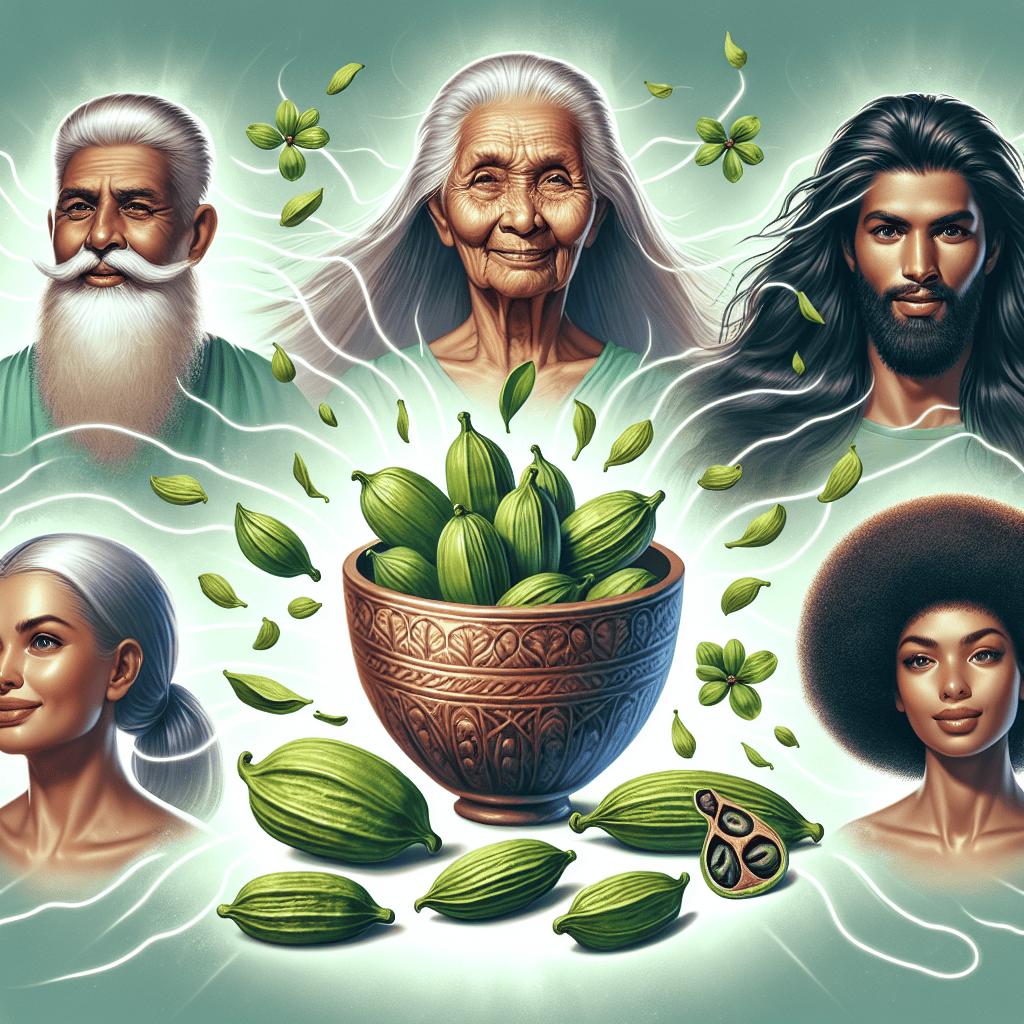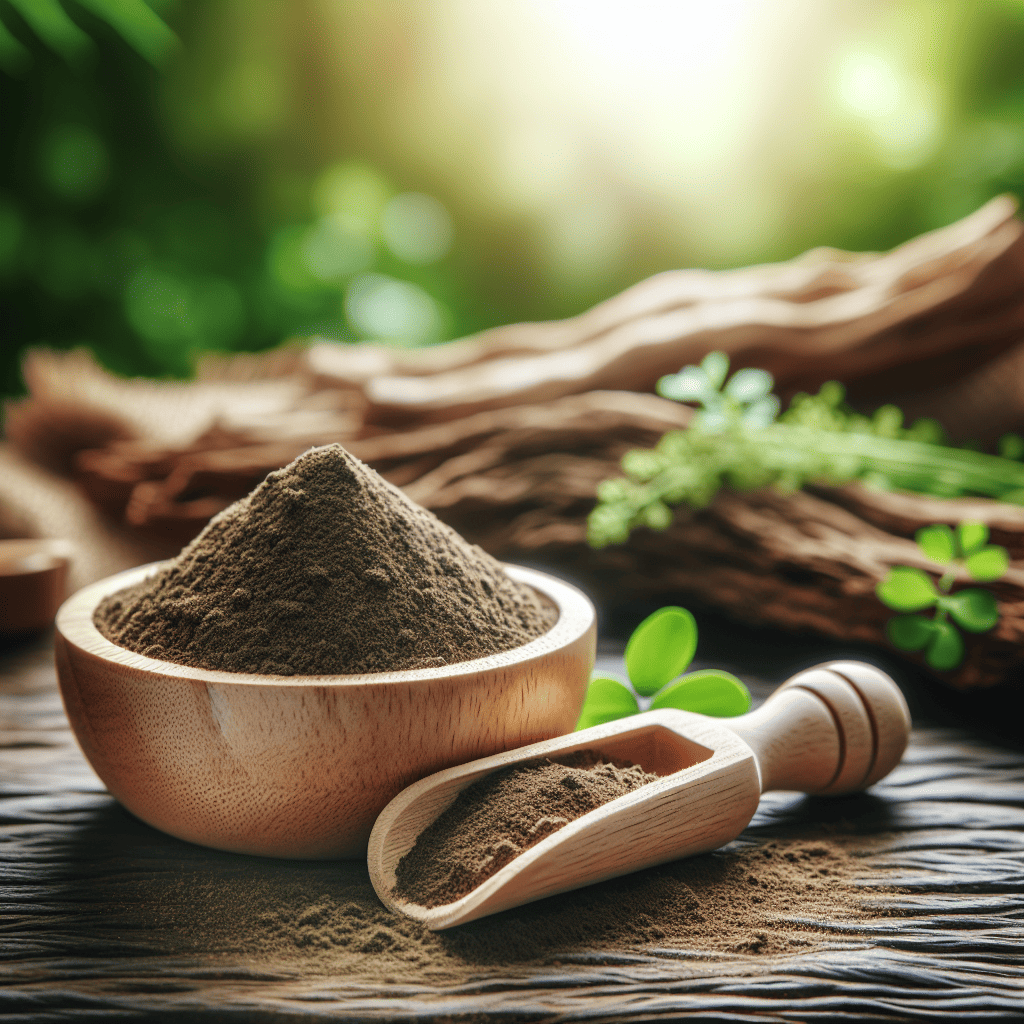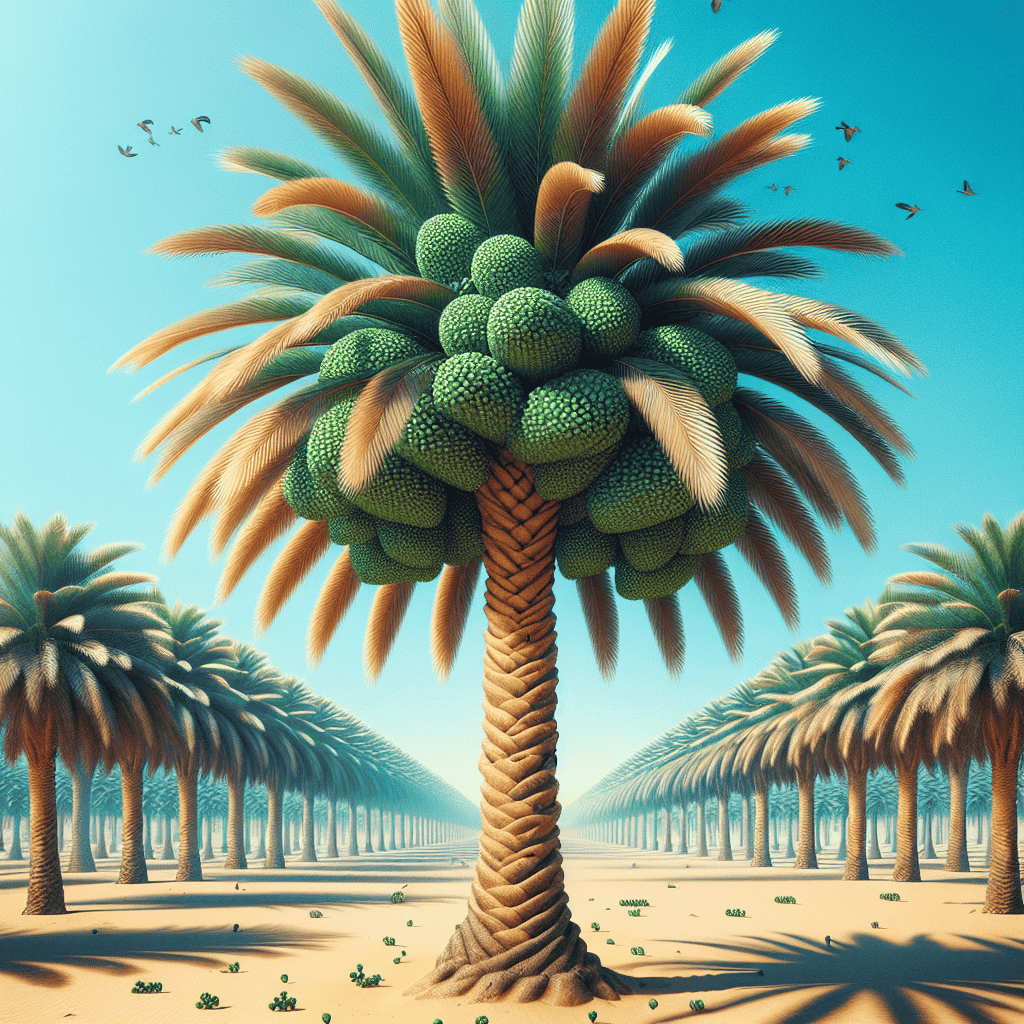Introduction: Uncover the ancient tradition of the Moroccan bath, a revitalizing ritual with numerous benefits for both the skin and overall wellness. This comprehensive guide explores the process of making a Moroccan bath at home, the incredible advantages it offers, and the importance of including black soap in this cleansing regimen.
Table of Contents
How to Make Moroccan Bath
Before immersing yourself in the luxurious Moroccan bath experience, understand the detailed steps to create this rejuvenating ritual at the comfort of your home.
- Ingredients:
Preparing a Moroccan bath at home can be a luxurious and rejuvenating experience. To start, gather the essential ingredients such as clay, yogurt, honey, and black soap. Clay is known for its detoxifying properties that help cleanse the skin, while yogurt contains lactic acid that can gently exfoliate and moisturize. Honey is a natural humectant that aids in retaining moisture, and black soap is rich in antioxidants and antibacterial properties.
To prepare the Moroccan bath mixture, begin by breaking the clay into small pieces to facilitate easy mixing. Combine the clay with yogurt, water, and honey in a bowl until a smooth paste is formed. The consistency of the mixture should be thick but spreadable. Once the concoction is ready, draw a warm bath and add the black soap. The steam from the hot water will help open up pores, allowing the mixture’s beneficial ingredients to penetrate deeply into the skin.
As you soak in the Moroccan bath, the combination of clay, yogurt, honey, and black soap will work together to cleanse, exfoliate, and nourish your skin. The clay and yogurt will help draw out impurities, while the honey will leave your skin feeling soft and hydrated. Black soap, with its natural ingredients, will further enhance the cleansing process and provide antibacterial benefits. The entire experience is not only relaxing but also promotes skin renewal and leaves you feeling refreshed and revitalized.
- Method:
The Moroccan bath, also known as Hammam, is a significant part of the Moroccan culture and a popular traditional cleansing ritual that offers a unique and luxurious spa experience. The process typically starts with relaxation in a steam room, which helps to open up the pores, allowing for deep cleansing. The high humidity also softens the skin and makes it easier to exfoliate. Natural ingredients like black soap made from olive oil and eucalyptus help to cleanse and moisturize the skin, while Rhassoul clay, known for its detoxifying properties, is used for a full-body mask. This combination of ingredients helps to remove dead skin cells, impurities, and toxins, leaving the skin soft, smooth, and rejuvenated.
During a Moroccan bath, the exfoliation process plays a crucial role in promoting skin renewal and improving blood circulation. The practitioner uses a special exfoliating glove called a ‘kessa’ to scrub the body vigorously, removing layers of dead skin and revealing fresh, glowing skin underneath. This process not only enhances the skin’s appearance but also allows for better absorption of nutrients from skincare products applied afterward. After exfoliation, a relaxing massage with nourishing oils such as argan oil is often performed to further hydrate and pamper the skin. The entire ritual is designed to promote relaxation, rejuvenation, and self-care, leaving you feeling refreshed both physically and mentally.
In addition to its numerous skin benefits, the Moroccan bath provides a holistic spa experience that benefits both the body and the mind. The warm steam, aromatherapy scents, and gentle massage techniques help to release tension, reduce stress, and promote overall well-being. The ritual of the Moroccan bath is not just about cleansing the body but also about nurturing the soul, creating a sensory journey that indulges the senses and calms the mind. Whether enjoyed at a traditional hammam or a modern spa, the Moroccan bath offers a luxurious escape from the hustle and bustle of everyday life, allowing you to unwind, detoxify, and pamper yourself in a culturally rich and relaxing environment.
Benefits of Moroccan Bath
Explore the myriad benefits that the Moroccan bath offers, enhancing both physical and mental well-being through its rejuvenating properties.
- Increased Blood Circulation:
The Moroccan bath, also known as hammam, is a traditional bathing ritual that not only cleanses the body but also provides numerous health benefits. One of the key advantages of this practice is its ability to stimulate blood flow. The combination of warm water and gentle exfoliation techniques helps to improve circulation, which in turn leads to better oxygen and nutrient delivery to the skin and other body tissues. This increased blood flow can result in healthier, more vibrant skin as well as a revitalized body. By eliminating toxins and dead skin cells through the exfoliation process, the Moroccan bath can leave the skin looking more radiant and youthful.
In addition to its effects on the skin, the Moroccan bath contributes to improved overall well-being. The relaxation and detoxification aspects of this bathing ritual can help reduce stress and promote a sense of calm and rejuvenation. The steam and heat involved in the process can also help soothe aching muscles, easing tension and promoting relaxation. Many people find the experience of a Moroccan bath to be not only physically beneficial but also mentally and emotionally refreshing. The combination of physical cleansing and mental relaxation can lead to a sense of renewal and well-being that extends beyond just the immediate effects on the skin and body.
Overall, the Moroccan bath offers a holistic approach to health and wellness, addressing both the physical and mental aspects of well-being. By promoting better blood flow, healthier skin, and a revitalized body, this traditional bathing ritual can contribute to a person’s overall health and quality of life. The combination of cleansing, exfoliation, relaxation, and detoxification makes the Moroccan bath a multifaceted practice that can have long-lasting benefits for both the body and the mind. Whether done at a spa or in the comfort of one’s own home, incorporating the Moroccan bath into a regular self-care routine can be a valuable tool for enhancing overall well-being.
- Stimulate the Immune System:
Moroccan bath rituals have been long-practiced as a therapeutic and rejuvenating treatment that offers numerous health benefits beyond just relaxation. One significant advantage is its ability to boost the immune system. The process involves a deep cleanse using various natural products like black soap, clay, and essential oils, which helps in removing toxins, dead skin cells, and impurities from the body. By eliminating these harmful elements, the body’s immune response is enhanced, allowing it to better defend against illnesses and infections. The combination of exfoliation, detoxification, and steam in a Moroccan bath aids in improving circulation and stimulating the lymphatic system, which in turn enhances the overall immune function of the body.
Furthermore, the heat and steam involved in a Moroccan bath play a crucial role in strengthening the body’s defense mechanisms. The steam helps to open up the pores, allowing for better absorption of the beneficial minerals present in the natural products used during the treatment. This absorption of minerals like magnesium, calcium, and potassium nourishes the skin, boosts cell regeneration, and supports overall wellness. The hot steam also aids in relieving muscle tension and promoting relaxation, which can reduce stress levels. Lower stress levels contribute significantly to a robust immune system, as chronic stress has been linked to weakened immunity. Therefore, engaging in regular Moroccan bath rituals not only strengthens the body’s defenses physically but also helps in promoting mental well-being.
In addition to the physical benefits, the relaxation and destressing effects of a Moroccan bath ritual can have a positive impact on mental health, indirectly contributing to overall immune system enhancement. Stress and anxiety are known to suppress the immune response, making the body more susceptible to infections and diseases. By indulging in a Moroccan bath, individuals can unwind, release tension, and experience a sense of tranquility. This mental relaxation can help in reducing the production of stress hormones like cortisol, thus allowing the immune system to function optimally. Overall, the holistic approach of a Moroccan bath, combining physical detoxification, relaxation, and mental rejuvenation, works synergistically to boost the immune system and promote better health outcomes.
- Excreting Toxins:
The Moroccan bath, also known as hammam, is a traditional cleansing ritual that has been practiced for centuries in Morocco and other parts of the Middle East. It involves a steam bath followed by exfoliation with a special type of soap called black soap, made from a mix of olive oil and crushed olives. The steam helps to open up the pores of the skin, allowing for deep cleansing and detoxification. The exfoliation process then removes dead skin cells, dirt, and impurities, leaving the skin feeling soft, smooth, and rejuvenated.
One of the key benefits of the Moroccan bath is its ability to effectively eliminate toxins from the skin. The combination of steam and exfoliation not only cleanses the skin on the surface but also helps to unclog pores and remove buildup that can lead to breakouts and dullness. By promoting detoxification, the Moroccan bath can help to improve the overall health and appearance of the skin, leaving it looking brighter and more radiant.
In addition to detoxifying the skin, the Moroccan bath also offers a range of other benefits. The steam and exfoliation process can help to improve circulation, promote relaxation, and relieve muscle tension. It can also help to improve the absorption of skincare products, making them more effective. Overall, the Moroccan bath is not just a cleansing ritual but a holistic experience that promotes both physical and mental well-being. Whether practiced in a traditional hammam or at home, the Moroccan bath can be a rejuvenating and refreshing addition to any skincare routine.
- Relaxation and Stress Relief:
The Moroccan bath ritual is a time-honored tradition deeply rooted in Moroccan culture, known for its revitalizing and calming effects on the body and mind. This centuries-old practice involves a steam bath that cleanses and purifies the skin, followed by a gentle exfoliation with traditional Moroccan black soap made from olive oil and eucalyptus. The exfoliation helps to remove dead skin cells, revealing smoother and softer skin underneath. Additionally, the use of a kessa glove during the exfoliation process stimulates blood circulation and promotes lymphatic drainage, leaving the skin rejuvenated and glowing.
Beyond the physical benefits, the Moroccan bath ritual offers significant mental and emotional advantages. The serene and tranquil environment of the hammam, or bathhouse, combined with the soothing warmth of the steam, creates a deeply relaxing experience that helps to alleviate stress and tension. The act of taking time out of one’s busy schedule to indulge in self-care and pampering can be therapeutic in itself, providing a much-needed break from the demands of daily life. The repetitive and rhythmic motions of the exfoliation process can also have a calming effect on the mind, promoting mindfulness and a sense of inner peace.
In essence, the Moroccan bath ritual provides a holistic approach to well-being, addressing the interconnectedness of the body, mind, and spirit. By cleansing the body of impurities, releasing tension, and fostering a sense of relaxation, this ritual contributes to an overall sense of rejuvenation and balance. It serves as a reminder to prioritize self-care and to nurture not only the physical body but also the emotional and mental aspects of oneself. Embracing this ancient tradition can be a transformative experience, offering a moment of respite in a busy world and promoting a deeper connection to one’s well-being.
Benefits of Black Soap
Discover the specific advantages of incorporating black soap in the Moroccan bath regimen for enhanced skin health and rejuvenation.
- Removing Dead Skin Cells:
Black soap is a natural product that originates from West Africa, specifically Ghana, Nigeria, and other neighboring countries. It is made from the ashes of plantain skins, cocoa pods, palm leaves, and shea tree bark, all of which are rich in antioxidants, vitamins, and minerals essential for skin health. These ingredients are then mixed with oils like palm oil, coconut oil, shea butter, or palm kernel oil to form a paste that can be used for cleansing the skin.
One of the key benefits of black soap is its effectiveness as an exfoliant. The rough texture of the soap, combined with the ashes and natural ingredients, helps to slough off dead skin cells, unclog pores, and promote skin cell turnover. This exfoliation process not only reveals smoother, more radiant skin but also allows for better absorption of skincare products, leading to improved overall skin health. Additionally, black soap is known for its antibacterial and antifungal properties, making it ideal for individuals with acne-prone or sensitive skin.
Regular use of black soap can help to address various skin concerns such as acne, eczema, hyperpigmentation, and dryness. Its gentle yet effective exfoliation makes it suitable for all skin types, including those with sensitive skin. However, it is essential to note that some black soap variants may be too harsh for certain individuals, so it is recommended to patch test before incorporating it into your skincare routine. Overall, black soap is a versatile and natural skincare product that can contribute to a healthier complexion by promoting exfoliation, improving skin texture, and supporting overall skin health.
- Increase Blood Circulation:
Black soap is a natural skincare product that is beneficial for improving blood circulation. When massaged onto the skin, the exfoliating properties of black soap help to remove dead skin cells and promote circulation by stimulating blood flow to the skin’s surface. This improved circulation not only aids in the delivery of oxygen and nutrients to the skin cells but also helps in the removal of toxins, resulting in a healthier and more vibrant complexion. Enhanced blood circulation can also contribute to a more youthful appearance by reducing the appearance of fine lines and wrinkles, giving the skin a rejuvenated and refreshed look.
In addition to its circulation-boosting benefits, black soap is rich in natural ingredients that nourish the skin and promote overall well-being. Ingredients such as shea butter, cocoa butter, coconut oil, and plantain peel provide hydration, antioxidants, and essential vitamins to the skin, helping to improve its texture, tone, and elasticity. These nutrients not only support skin health but can also have a positive impact on mental well-being, as taking care of our skin can boost self-confidence and promote a sense of self-care and relaxation. The holistic approach of black soap towards skincare not only focuses on enhancing external beauty but also on promoting a sense of overall wellness.
Regular use of black soap can lead to a revitalized appearance and improved skin vitality. By incorporating black soap into a skincare routine, individuals can experience the benefits of improved blood circulation, nourished skin, and a rejuvenated complexion. The natural ingredients in black soap work synergistically to provide a gentle yet effective cleansing and moisturizing experience, making it suitable for various skin types. Whether used for the face or body, black soap offers a holistic approach to skincare that goes beyond superficial beauty, promoting a healthier and more radiant appearance from the inside out.
- Reducing Hair Growth:
Black soap is a natural product that has been used for centuries in African countries like Ghana and Nigeria. It is made from ingredients such as plant ashes, cocoa pod husks, palm oil, and shea butter, which give it its unique black color and rich lather. Apart from being a popular skincare product, black soap also has properties that can help slow down hair growth. This can be particularly beneficial for individuals who are looking to reduce the need for frequent hair removal, such as shaving or waxing.
One of the reasons black soap may help slow down hair growth is its exfoliating properties. The gritty texture of black soap helps to slough off dead skin cells and unclog hair follicles, which can lead to smoother, softer skin. When used regularly, black soap can help to reduce the thickness of hair and the rate at which it grows back after removal. This can result in hair that appears finer and softer over time, making maintenance easier and extending the time between hair removal sessions.
Additionally, black soap contains natural ingredients that have anti-inflammatory and soothing properties. These can help to reduce irritation and redness that may occur after hair removal, whether through shaving, waxing, or other methods. By calming the skin and reducing inflammation, black soap can create a more favorable environment for hair growth regulation. While individual results may vary, incorporating black soap into a regular skincare routine may offer the added benefit of slowing down hair growth for those who desire this effect.
- Absorbing Useful Substances:
Black soap, also known as African black soap, is a natural cleanser made from plant-based ingredients like cocoa pods, shea butter, palm oil, and plantain skins. This unique soap is rich in vitamins and minerals that are beneficial for the skin, such as vitamin A and E, which help to nourish and protect the skin. When used as part of a skincare routine, black soap can help to remove dirt, oil, and impurities from the skin, leaving it clean and refreshed.
One of the key benefits of using black soap is its ability to prepare the skin to better absorb other skincare products. By cleansing the skin with black soap, the pores are cleared of buildup and impurities, allowing for better penetration of serums, moisturizers, and treatments. This means that the active ingredients in subsequent skincare products can be more effectively absorbed by the skin, maximizing their benefits and enhancing their effectiveness. Additionally, the vitamins and minerals in black soap help to create an optimal environment for the skin to absorb nutrients and elements, promoting overall skin health and vitality.
Incorporating black soap into a skincare routine can help to improve the efficacy of other products, resulting in clearer, healthier-looking skin. By starting with a clean and well-prepared canvas, the skin is better able to benefit from the nourishing and rejuvenating properties of serums, oils, and moisturizers. Regular use of black soap can also help to address various skin concerns, such as acne, eczema, and hyperpigmentation, thanks to its gentle yet effective cleansing and purifying properties. Overall, incorporating black soap into a skincare regimen can lead to better absorption of essential nutrients and elements, ultimately maximizing the benefits of subsequent skincare treatments and products.
The History of Moroccan Bath Rituals:
The Moroccan bath tradition, also known as Hammam, has its origins deeply rooted in the rich history and cultural heritage of Morocco. The practice of Hammam dates back to the time of the Roman Empire, where public bathhouses were commonplace for hygiene and relaxation. Over the centuries, the Hammam tradition in Morocco has evolved and integrated various cultural influences, including Arabic and Berber traditions, making it a unique and integral part of Moroccan society. Hammams have traditionally been social spaces where people gather not only for bathing but also for socializing, gossiping, and connecting with others in their community.
The significance of the Moroccan bath tradition lies in its holistic approach to health and well-being. Beyond the physical cleansing of the body, Hammam rituals are believed to have therapeutic benefits for both the body and mind. The process typically involves steaming, exfoliation, and massage, using natural ingredients such as black soap, ghassoul clay, and argan oil, known for their nourishing and revitalizing properties. The steam and heat in the Hammam help to open up pores, detoxify the skin, and promote relaxation, while the exfoliation and massage techniques improve circulation, release tension, and leave the skin glowing. In addition to the physical benefits, the Hammam experience is also seen as a spiritual and mental detox, providing a sanctuary for relaxation, reflection, and rejuvenation.
The Moroccan bath tradition is deeply ingrained in Moroccan culture and is considered a vital part of self-care and personal grooming. It is not only a means of cleansing the body but also a ritual that promotes social bonding, relaxation, and overall well-being. For Moroccans, visiting the Hammam is more than just a leisure activity; it is a cherished part of their heritage and a way to maintain health and beauty traditions passed down through generations. Today, the Hammam experience has also become popular among tourists visiting Morocco, offering them a glimpse into the country’s rich cultural practices and an opportunity to indulge in a centuries-old tradition of self-care and rejuvenation.
Traditional Ingredients Used in Moroccan Baths:
Moroccan baths, also known as Hammams, are renowned for their use of natural elements and traditional ingredients that promote skin rejuvenation and relaxation. One of the primary components often found in Moroccan baths is black soap, which is made from a mixture of olive oil and crushed black olives. This soap is used to cleanse the skin thoroughly, removing impurities and dead skin cells, leaving behind soft and smooth skin. The high vitamin E content in black soap helps to nourish and hydrate the skin, making it a staple in Moroccan bath rituals.
Another essential ingredient in Moroccan baths is Rhassoul clay, a mineral-rich clay found in the Atlas Mountains of Morocco. Rhassoul clay is known for its detoxifying and exfoliating properties, making it ideal for drawing out impurities from the skin and unclogging pores. When mixed with water, Rhassoul clay forms a silky paste that is applied to the skin, leaving it feeling refreshed and rejuvenated. The clay also helps to improve skin elasticity and tone, promoting a youthful appearance.
In addition to black soap and Rhassoul clay, Moroccan baths often incorporate aromatic essential oils such as argan oil and rose oil. Argan oil, derived from the kernels of the argan tree, is rich in antioxidants and fatty acids that help to moisturize and repair the skin. Rose oil, extracted from rose petals, has anti-inflammatory and soothing properties that can help calm the skin and reduce redness. These essential oils are often used in massages during Moroccan baths, providing a luxurious and calming experience for both the skin and senses. With these natural elements and traditional ingredients, Moroccan baths offer a holistic approach to skincare, promoting not only physical relaxation but also mental rejuvenation.
Modern Adaptations of Moroccan Bath Rituals:
The Moroccan bath tradition, also known as hammam, has a long history dating back to ancient times. Traditionally, hammams were communal spaces where people gathered not only to cleanse their bodies but also to socialize and relax. The practice of hammam has deep cultural roots in Morocco and the surrounding regions, with rituals that involve scrubbing the skin with black soap made from olives, exfoliating with a kessa glove, and rinsing with warm water. These ancient practices have been passed down through generations, reflecting a holistic approach to wellness that emphasizes the importance of physical and spiritual purification.
In recent years, the Moroccan bath tradition has undergone a transformation to meet the modern wellness needs of individuals seeking relaxation and rejuvenation. Many spas and wellness centers now offer hammam experiences that combine the ancient rituals with contemporary spa treatments. These modern hammam experiences often include luxurious amenities such as aromatherapy, massage therapies, and skincare treatments. By blending ancient practices with modern spa experiences, the Moroccan bath tradition has evolved to cater to a wider audience, attracting both locals and tourists looking to unwind and pamper themselves.
The evolution of the hammam into a modern wellness practice has also contributed to the growing popularity of Moroccan spas around the world. As people become more conscious of the benefits of holistic wellness practices, the demand for authentic hammam experiences has increased. Beyond its physical cleansing benefits, the hammam offers a unique opportunity for relaxation, detoxification, and rejuvenation. By embracing the principles of self-care and mindfulness, the Moroccan bath tradition continues to thrive in the modern world, providing a sanctuary for individuals to escape the stresses of everyday life and reconnect with their bodies and spirits.




